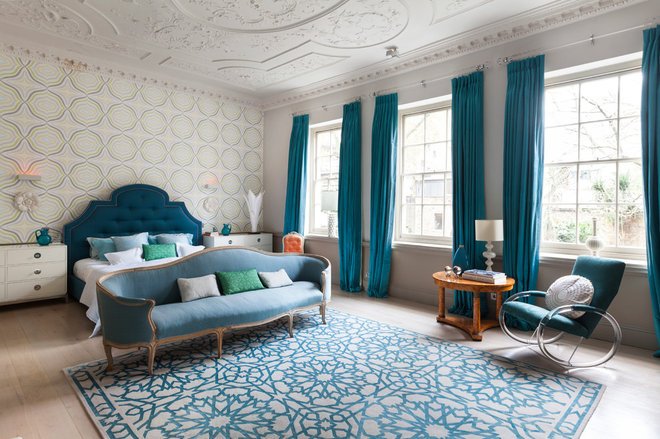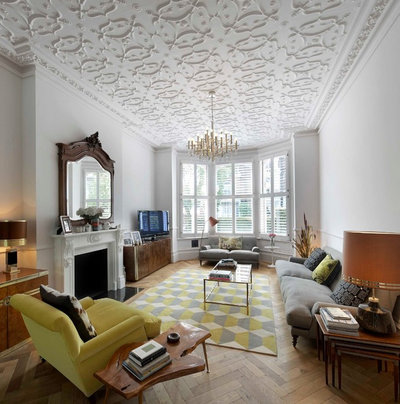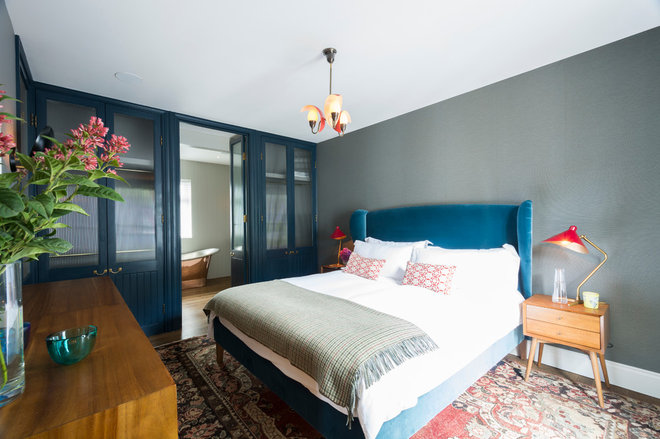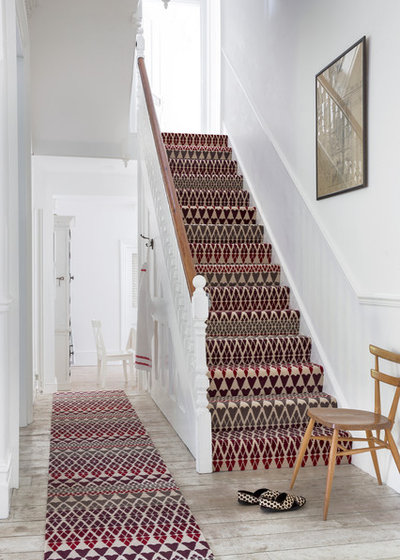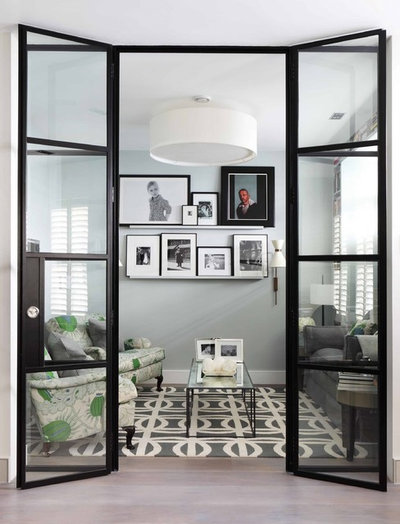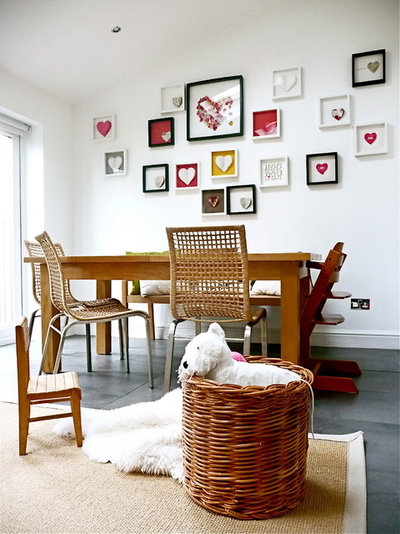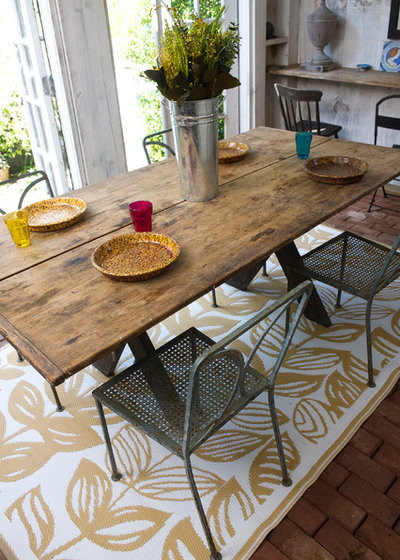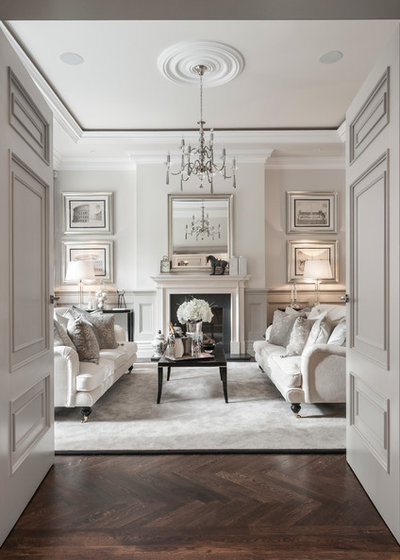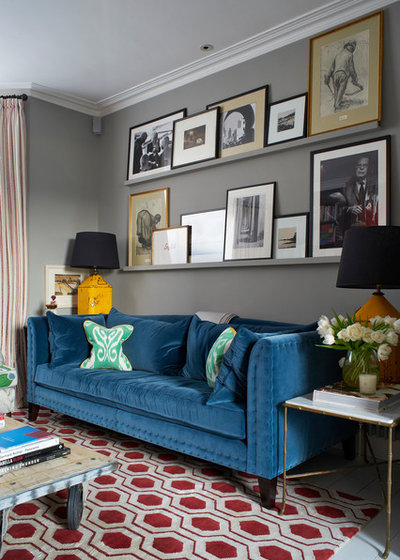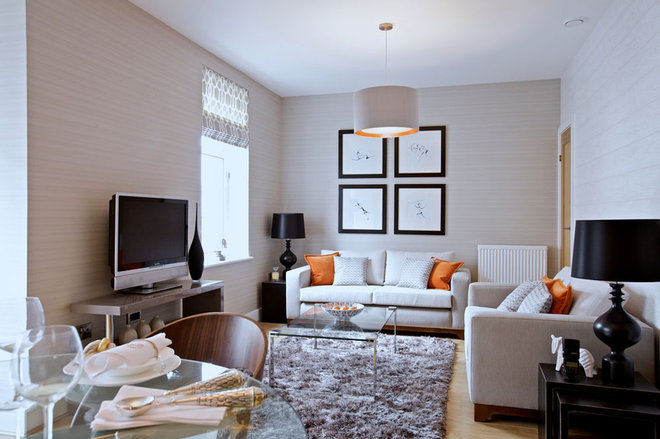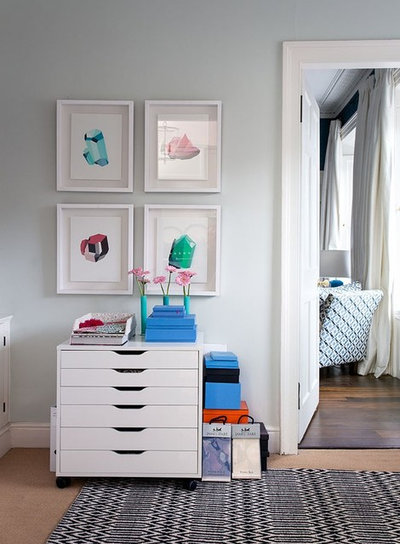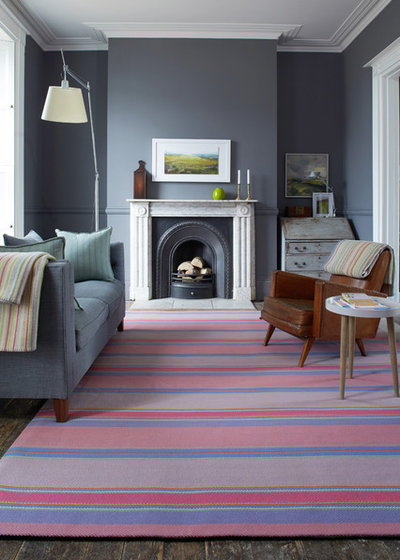Rugs offer one of the easiest ways to add color, warmth and texture to a space. Choose wisely, however, because a rug also has the power to completely change the look and feel of a room. What’s more, what your rug is made of will determine where it’s best used. Three U.K. flooring experts help us sort through the options.
Why choose a rug? “A rug is more versatile than a carpet and offers a good way to soften a hard stone or wooden floor, which, although practical, can be rather noisy,” says Roger Oates. “A wool rug with a good underlay will soften the acoustics.”
Rugs are also the perfect antidote to the ubiquitous wooden floor. “As people move away from minimalism, they’re looking to create a more comfortable feel in their homes that includes the softness and luxury of a rug underfoot,” Oates says.
“It’s not common practice to seasonally change floor coverings, but with rugs it couldn’t be easier,” he adds. “Use textured wool rugs to provide color and warmth for a cocooning effect in winter, then replace with fine cotton rugs in summer for a cool, pared-down look.”
Oates believes a rug should be one of the first considerations when furnishing a room. “When choosing your decor, remember it’s usually easier to match wallpaper and paint to carpet or rugs rather than vice versa.”
Rugs are also the perfect antidote to the ubiquitous wooden floor. “As people move away from minimalism, they’re looking to create a more comfortable feel in their homes that includes the softness and luxury of a rug underfoot,” Oates says.
“It’s not common practice to seasonally change floor coverings, but with rugs it couldn’t be easier,” he adds. “Use textured wool rugs to provide color and warmth for a cocooning effect in winter, then replace with fine cotton rugs in summer for a cool, pared-down look.”
Oates believes a rug should be one of the first considerations when furnishing a room. “When choosing your decor, remember it’s usually easier to match wallpaper and paint to carpet or rugs rather than vice versa.”
What are the practicalities? The rug you choose will be dictated as much by personal taste as by practical considerations, says Kate Mooney of Houseology. “Before you consider colors and patterns, decide which material will go below your feet and why,” she says. “Ask yourself some questions: What is the room used for? Who uses it and how often? Your answers will have an impact on your choice.
“Think about your room in the context of everyday living,” she says. “Do pets and children use the space? Is it a room for relaxing, or one that serves a specific purpose, such as a kitchen or bathroom?”
Take, for example, a child’s room, where spills are likely to occur. The solution: a rug made in a stain-resistant material, such as polypropylene. On the other hand, if you want to inject a serious dose of grown-up glamour into your bedroom, a luxurious silk rug might be the way to go.
“Think about your room in the context of everyday living,” she says. “Do pets and children use the space? Is it a room for relaxing, or one that serves a specific purpose, such as a kitchen or bathroom?”
Take, for example, a child’s room, where spills are likely to occur. The solution: a rug made in a stain-resistant material, such as polypropylene. On the other hand, if you want to inject a serious dose of grown-up glamour into your bedroom, a luxurious silk rug might be the way to go.
How should you place your rug? To create maximum impact, always buy the largest rug possible. “Arrange your furniture around the edges of the rug, but place all, or at least the front feet, of your furniture on the rug to create a cohesive look,” Oates says. “If you’re using a rug in a bedroom, place a narrow runner on either side of the bed, or choose a big rug that will not only go under the bed, but also be visible around it.
“If you’re using a rug in a dining room, make sure the rug goes under the table and fully under the chairs, even when they’re pulled out for people to sit on,” he says.
“We’re being asked to make much larger rugs that cover more of the floor area, rather than just creating an island under a coffee table or in front of a sofa,” Oates says. “These rugs are almost like carpeting, but offer the flexibility of being taken up for a seasonal change. Customers often buy a second, smaller rug in a contrasting texture to layer on top for a cocooning effect."
“If you’re using a rug in a dining room, make sure the rug goes under the table and fully under the chairs, even when they’re pulled out for people to sit on,” he says.
“We’re being asked to make much larger rugs that cover more of the floor area, rather than just creating an island under a coffee table or in front of a sofa,” Oates says. “These rugs are almost like carpeting, but offer the flexibility of being taken up for a seasonal change. Customers often buy a second, smaller rug in a contrasting texture to layer on top for a cocooning effect."
When should you opt for a runner? A runner is a narrow rug that’s ideal for stairs, in halls and on landings, as well as in front of fireplaces and sofas or by the side of the bed.
“Runners can also be used to define areas of a room,” Oates says. “In the 18th century, they were used to protect the better carpets in grand houses, but today they are sought after in their own right.”
“Runners can also be used to define areas of a room,” Oates says. “In the 18th century, they were used to protect the better carpets in grand houses, but today they are sought after in their own right.”
Wool rugs. There are many materials and structures to choose from when picking the perfect rug for your space.
Wool’s properties make it ideal rug material. Not only does it look and feel luxurious underfoot, it’s also hard-wearing, spill- and dirt-resistant and fire-retardant. It also offers excellent heat and sound insulation. Pure wool rugs are usually more expensive than those made with synthetic materials. “However, as wool can last longer than many other fibers, it can be worth the investment,” Mooney says.
Be aware that a 100 percent wool rug is not suitable for all spaces. In hard-wearing areas, such as a child’s bedroom, a wool-rich rug — made using a mix of wool and man-made fibers such as nylon and polypropylene — will generally fare better than pure wool. Shop around for a wool-synthetic mix that meets your budget. However, remember that the higher the man-made content, the less wool’s natural characteristics will be seen.
Wool’s properties make it ideal rug material. Not only does it look and feel luxurious underfoot, it’s also hard-wearing, spill- and dirt-resistant and fire-retardant. It also offers excellent heat and sound insulation. Pure wool rugs are usually more expensive than those made with synthetic materials. “However, as wool can last longer than many other fibers, it can be worth the investment,” Mooney says.
Be aware that a 100 percent wool rug is not suitable for all spaces. In hard-wearing areas, such as a child’s bedroom, a wool-rich rug — made using a mix of wool and man-made fibers such as nylon and polypropylene — will generally fare better than pure wool. Shop around for a wool-synthetic mix that meets your budget. However, remember that the higher the man-made content, the less wool’s natural characteristics will be seen.
Plant-fiber rugs. Wool isn’t the only natural material used to make rugs; other options include plant-fiber designs, made from the likes of jute and sisal, as seen here.
“Natural rugs are strong, resilient and sustainable,” says Lorna Haigh of Alternative Flooring. “They’re also naturally fire-retardant, and they breathe and absorb humidity in the air, releasing it when the atmosphere becomes dry. They also help to improve air quality by absorbing airborne toxins.”
Natural-fiber rugs are ideal for high-traffic areas, such as hallways and kitchens, except for jute, which is less durable than sisal and is best used in low-traffic areas. “Plant-fiber rugs don’t show dirt and can easily be vacuumed, but liquid spills can still leave marks on them,” Haigh notes.
“Natural rugs are strong, resilient and sustainable,” says Lorna Haigh of Alternative Flooring. “They’re also naturally fire-retardant, and they breathe and absorb humidity in the air, releasing it when the atmosphere becomes dry. They also help to improve air quality by absorbing airborne toxins.”
Natural-fiber rugs are ideal for high-traffic areas, such as hallways and kitchens, except for jute, which is less durable than sisal and is best used in low-traffic areas. “Plant-fiber rugs don’t show dirt and can easily be vacuumed, but liquid spills can still leave marks on them,” Haigh notes.
Synthetic rugs. Stain-resistant, fade-resistant, extremely durable and easy to clean, polypropylene is a cost-effective, man-made fiber that’s a practical choice for areas of the home that are likely to experience spills.
“The pile can flatten faster than rugs made of wool, so shorter piles work better in areas with lots of footfall,” Haigh says.
Nylon, also known as polyamide, is considered the most durable of the synthetic fibers. “This means polyamide rugs can be more costly than their synthetic counterparts, but their excellent longevity can offset the cost,” Haigh says.
“The pile can flatten faster than rugs made of wool, so shorter piles work better in areas with lots of footfall,” Haigh says.
Nylon, also known as polyamide, is considered the most durable of the synthetic fibers. “This means polyamide rugs can be more costly than their synthetic counterparts, but their excellent longevity can offset the cost,” Haigh says.
Silk and cotton rugs. The reflective sheen of a silk rug brings a luxurious look to a bedroom or living room, as seen here. Super-soft to the touch, silk is generally less sturdy than wool and more expensive. What’s more, it can be difficult to clean.
Cotton is a strong, versatile and relatively inexpensive natural product. The disadvantage is that it can attract dirt easily, but the good news is that a small cotton rug is very easy to wash.
Cotton is a strong, versatile and relatively inexpensive natural product. The disadvantage is that it can attract dirt easily, but the good news is that a small cotton rug is very easy to wash.
Twist-pile rugs. Pile not only affects the look and feel of a rug, it also indicates the degree of wear you should expect. Twist pile is the most popular and is made from twisted fibers to create a coarse, hard-wearing finish that’s perfect for busy areas.
“Twist carpets are available in a huge range of colors and styles,” Haigh says. “Depending on the material your twist pile is made from, these rugs are more likely to flatten than loop or cut piles.”
“Twist carpets are available in a huge range of colors and styles,” Haigh says. “Depending on the material your twist pile is made from, these rugs are more likely to flatten than loop or cut piles.”
Cut-pile rugs. Cut pile is created when the loops that result from weaving are cut to the same height and allowed to slightly tuft. The types of cut-pile rugs available include:
- Saxony-pile rugs, which have a deep pile, making them feel soft and luxurious. “The fibers are heat-set so they don’t untwist, but, due to the length of the fibers, they can start to look a little flat in high-traffic areas,” Haigh says.
- Velvet-pile rugs, which have a smooth, luxurious finish, rather like suede. “These are perfect for the bedroom, although they’re tough enough for other rooms too,” Haigh says.
- Shag-pile rugs, which have an extra-long cut pile, making them feel wonderful underfoot. “These rugs are best used in occasion spaces, as they can be trickier to clean and maintain,” Haigh says.
Loop-pile and cut-and-loop-pile rugs. Loop pile consists of uncut loops of yarn, resulting in a rich texture, particularly when loops of different lengths are used. “Loop carpets are durable enough to be used throughout the home, although snagging can occur,” Haigh says. For this reason, a loop pile is not recommended if you have four-legged friends — claws can get caught in the loops.
Cut-and-loop-pile rugs are created from both cut and uncut fibers, which creates a tactile feel. “Texture is a wonderful way to bring a new dimension to an interior scheme, adding visual weight and decadent softness underfoot,” Haigh says.
Cut-and-loop-pile rugs are created from both cut and uncut fibers, which creates a tactile feel. “Texture is a wonderful way to bring a new dimension to an interior scheme, adding visual weight and decadent softness underfoot,” Haigh says.
Flat-weave rugs. Flat-weave has a robust, durable construction and subtly woven texture that provides a stylish alternative to pile carpet. “Flat-weave creates a style of flooring that was popular in Britain before the rise of pile carpets in the early 19th century,” Oates says. “Most rugs and runners were once made this way.
“Unlike pile carpet, which has an even, uniform feel, like a perfectly manicured bowling green, flat-weave has a texture that lends a unique character and personality to a floor. The disadvantage of flat-weave is that animals such as cats can catch their claws in its woven texture.”
“Unlike pile carpet, which has an even, uniform feel, like a perfectly manicured bowling green, flat-weave has a texture that lends a unique character and personality to a floor. The disadvantage of flat-weave is that animals such as cats can catch their claws in its woven texture.”

